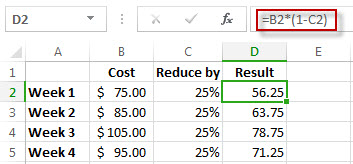

In the example below, another date appears when you apply the formula instead of the duration. Use this in the cell where you want the duration between those two days to be displayed. The formula to subtract dates in Excel is = End_Date – Start_Date. Starting with 1 for the year 1900 and the consecutive numbers for the following years.
:max_bytes(150000):strip_icc()/how-to-subtract-in-excel-3124091-2-5bf6cecc46e0fb00514076e3.png)
You subtract dates the same way you would numbers, as Excel stores date values as numbers internally. Step 3: Drag the formula until the end of the required data column.Step 2: Enter the address of the cells to be subtracted with the minus sign.Step 1: Select the cell where you want the result to appear.What do you do when subtracting a large set of numbers? Simple, subtract cells in Excel. The formula to do it, type the cell references separated by a minus sign like we did when subtracting multiple numbers.įor example, to subtract cells E3:E7 from E1, construct a formula as =E1-E3-E4-E5-E6-E7, or simply = E1-SUM(E3:E7).Įxcel spreadsheets store vast amounts of data, and you cannot apply the minus operator when you have a series of numbers in multiple columns. You can follow this pattern for simple calculations in Excel.Ĭonsider the example below, which has a series of numbers to be subtracted, and then display the results. Use parentheses to align with the order of operations in mathematics. When you have an equation that performs various arithmetic operations, the subtract formula in Excel to do it is = (number1 – number2 )/ number n).

In Excel, to find the difference between the given numbers, perform a simple subtraction using the formula =number1 – number2. This article aims to help you understand how to subtract in Excel, with examples. Instead, you can use the symbol ‘-’ to subtract numbers to get the results.īesides subtracting numbers, you can subtract two columns, multiple columns, date, time, and percentages, using the ‘-’ sign. But, for subtraction, there is no explicit function as ‘SUBTRACT’, as the ‘SUM’ function. In Microsoft Excel, you have the function =SUM() to add the given set of numbers. The standard arithmetic operations applied to the data on the spreadsheets are addition, subtraction, multiplication, and division. Numbers are everywhere, from calculating salary, budget allocation, inventory management, and sales forecast. The most basic and often used function is the subtract function.


 0 kommentar(er)
0 kommentar(er)
